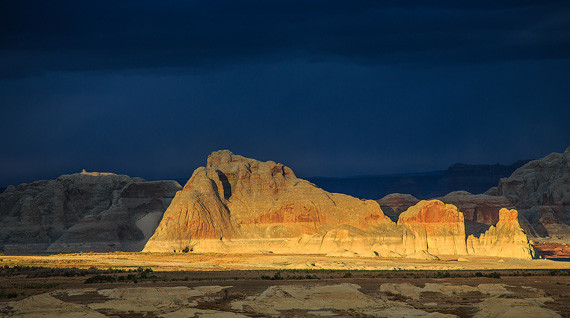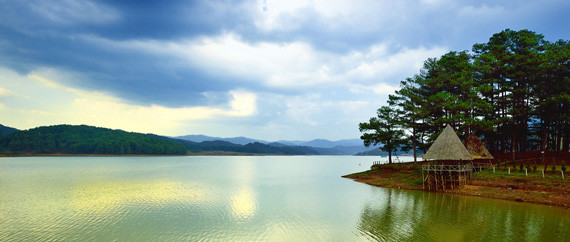Landscapes are amongst the most popular subjects for photography, and with some of the best scenery to be found in the U.K, it’s not surprising why. Many of us enjoy a day out in the countryside, and to take along the camera is often second nature. Coming back with some nice record shots can be satisfying, but how do you turn your landscape scenes into truly inspiring images? One of the first things to remember about landscape photography is that lighting is key. It can’t be emphasized enough just how much the quality of light can affect your pictures.

Photo by Khun Hans.
Sunlight is usually required to capture a good landscape scene, but you need to try and avoid harsh light. When the sun is very high in the sky, the lighting becomes too strong, there is too much contrast, and detail and color are lost. Ideally, you want to try to shoot when the sun is much lower, either early morning or late afternoon.
On a clear summer’s day this can mean that realistically the light is too strong between around 9am and 4pm (virtually the whole day!). During other seasons the sun is lower all day, so there are more quality hours of sunshine available. Shooting with a lower sun also provides a more three dimensional quality, as shadows become longer, revealing shape and form in the landscape. This can be invaluable and usually provides a much more appealing and interesting picture than one taken during midday which will appear very flat.
For many landscape shots, you will want to show the wide scene. To do this you need to use a wide angle lens or the widest end of your zoom. This allows you to fill the frame with as much as possible. It also distorts perspective making close objects look even closer, and distant objects look further away.

Photo by Binh Huynh; ISO 320, f/8, 1/80 exposure.
Don’t use a wide angle all the time though. There are times when scenes provide perfect opportunities to zoom in closer. You may be above a village with beautiful roof tops and a church spire above the trees; zooming in would allow you to record the most interesting area, effectively cropping the landscape and recording a scene ‘within a scene’.
Composition
Viewpoint and composition are also important when taking pictures. Try to create depth in the image. Using a good focal point in the foreground is ideal—a tree, boulder, or perhaps a bridge or stream. Consider the height you’re taking the picture from and think: would this look better if I was lower down, or higher up? Don’t just settle on taking all your shots from head height—try some variation. Try to include the most interesting parts in your picture. Look for lines such as streams and footpaths which act as ‘lead-in lines’ and help draw the eye into the frame. Diagonal lines tend to work best, as they create more impact.

Photo by Flickr user barnyz; ISO 200, f/11, 1/100 exposure.
Color
Color can make a landscape image truly work. Look for any color you can, whether it be bright flowers, a bracken covered hillside, or perhaps a stone wall covered in vibrant green moss. Even a red telephone box might work if it fits in nicely with the surroundings. In winter, there is less color around, but watch out for cold mornings where frosty areas that still remain in shadow create a lovely cool blue shade, adding another dimension to your image.
Recommended Gear
Depending how far you want to take it, there are a number of additions to your kit that will help improve your landscape photography. A tripod or monopod will make sure that all your images are sharp and also slow you down, helping you concentrate on composition.
Filters are also useful. A polarizing filter is ideal on sunny day where they cut through haze, increase color saturation and make the clouds leap out of the sky. Graduated filters are also popular. They’re used to effectively darken the sky where the sky is too bright; this evens up the otherwise high contrast which all cameras struggle to cope with.

Photo by Vincent Moschetti; ISO 200, f/10, 1/80 exposure.
If you really want to do the landscape justice then there is no substitute for doing your research. Walking a route or driving around an area is a surefire way of finding where the best pictures are. Think about returning at a better time of day, and try to judge where the sun will be. Also bear in mind the seasonal changes. One location may look pretty dull during late summer, but it could be completely transformed once the autumn colors arrive. All of this comes with experience, but the more time you spend out there, the more likely you are to bag some truly rewarding images.
About the Author:
Paul Miguel is a professional landscape and wildlife photographer based in West Yorkshire. His work is regularly used by a number of magazines and publishers. He also runs a range of photography workshops.
Like This Article?
Don't Miss The Next One!
Join over 100,000 photographers of all experience levels who receive our free photography tips and articles to stay current:






Leave a Reply